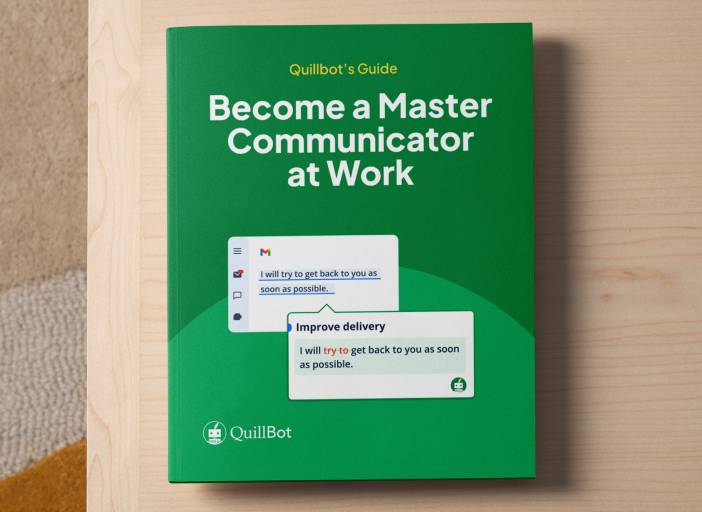How to Write a Memo | Examples, Template & Phrases
A memo, or memorandum, is a concise internal message that shares information about an aspect of an organization’s official business (e.g., a procedure, policy, or decision) or makes an announcement or request. This article will show you how to write a memo in a standard format that strikes the right professional tone.
What is a memo?
A memo is a clearly structured and concisely formulated internal, work-related message. Memos are often about a procedure, policy, or decision, or they make an announcement or request.
Nowadays, people sometimes use the word “memo” to mean “a clear, structured summary or explanation in an email.” So if your boss says, “Send me a memo about that,” they’re probably asking for an email that lays out the key information they need to understand a topic so they can make a decision about it.
You can send a memo to an individual or group of people within an organization, such as a whole department. The official nature of the professional memo format indicates that the message contains important information that the reader needs to take note of or act on.
How to write a business memo
Email and other digital tools have largely replaced printed memos, but the traditional memo format is still sometimes used within the body of an email. A memo can also be sent as an email attachment (e.g., a PDF) or published as a pinned message on a digital platform.
Memo format
A memo has the word “memo” or “memorandum” at the top of the page as a main heading. This is followed by the headings:
- To:
- From:
- Date:
- Subject:
The content of the message comes below these headings, presented clearly and concisely using a professional tone. If you are attaching documents to the memo, you can list these at the bottom under the heading “Attachments.”
To: [Individual or group you are sending the memo to]
From: [Your name or name of individual/department, etc., you are sending it on behalf of]
Date: [Date you will send the memo]
Subject: [Description of the content of your message]
[Message]
Attachments:
[List attachments]
Memo examples
Here is an example of a memo about a change to an HR procedure written in an informal but professional tone.
To: All Permanent Staff
From: Liselle Kovac, HR Director
Date: July 15, 2025
Subject: New Procedure for Requesting Remote Workdays
We’re making a small change to how remote workdays are requested, with the goal of making scheduling smoother and ensuring teams stay properly staffed.
Starting August 1, all remote work requests will need to be submitted through the updated form on the HR portal. The request must be sent in at least three business days in advance. Going forward, please don’t use email or Slack for these requests.
Once a request is submitted, managers will get an automated notification and can approve it right in the system. You can find the new form here:
intranet.companyname.com/hr/remote-work-requests
If you run into any issues or have questions about the new system, feel free to reach out to HR at [email protected] or call ext. 2555.
Thanks for helping us keep things running smoothly.
The following example is an email that fulfills the same function as a traditional memo. The inclusion of headings like “Action required:,” “Update:,” “Announcement:,” or “New Procedure:” in the subject line can help to signal that the email is functioning as a memo.
From: Emily Lee, Department Assistant (Marketing)
Subject: Action Required: Last Seats for the Springfield Industry Awards
As I’m sure you know, our team has been nominated for several honors at this year’s Springfield Industry Awards, taking place on Friday, August 8, at the Grand Hotel downtown.
There are still three seats available at our table for the ceremony. If you’re interested in coming, please email me by Friday, July 18, to request a spot. If demand exceeds availability, we’ll prioritize those who were directly involved in the nominated projects or who didn’t have the chance to attend last year.
This is a great opportunity to represent our team, connect with peers in the industry, and celebrate the success of these projects.
The department will cover the cost of your seat at the table, the meal, and drinks. Please note that the dress code for the event is formal business attire.
Don’t forget to email me by Friday if you’d like to attend.
Memo phrases
The following table provides example phrases for common communication functions required in professional memos.
| Function | Phrase |
|---|---|
| Introducing the topic | As part of our ongoing efforts to [goal], … |
| We’d like to share a quick update about [topic]. | |
| You may have noticed some recent changes regarding [topic] … | |
| I’m writing to inform you that … | |
| Introducing good news | We’re pleased to announce that … |
| I’m happy to share the following update about … | |
| Effective [date], you’ll notice the following improvements to … | |
| Introducing bad news | Unfortunately, we are unable to … |
| Due to [reason], the following changes will take effect … | |
| We wanted to let you know about an upcoming change that may affect …. | |
| Making a request | Please take a moment to complete [task] by [date]. |
| We kindly ask that you … | |
| Please respond by [date]. | |
| Offering help | If you need assistance, please contact [name/department]. |
| For additional support, feel free to reach out to … | |
| Promising action/next steps | We will share further details shortly. |
| We’re currently reviewing the situation and will update you as soon as we know more. | |
| We’ll keep you posted as we learn more. | |
| Referring to a document or resource | For more information, please see the attached document. |
| Please refer to the [manual/report] linked below. | |
| Additional details can be found in … | |
| Emphasizing important information | Please note that … |
| It’s important to be aware that … | |
| Please keep in mind that … | |
| Explaining a change or decision | This change was made in response to … |
| After reviewing the situation carefully, we’ve decided to … | |
| The decision was based on … | |
| Reminding | This is a reminder that … |
| Please remember to … | |
| As previously mentioned, … | |
| Summarizing a meeting | Key takeaways from the meeting include … |
| The following steps were agreed upon at the meeting. | |
| Calling attention to a problem or risk | We have identified an issue regarding … |
| We are currently reviewing … | |
| Issuing instructions | Please follow the steps outlined below … |
| To complete this process, you’ll need to … | |
| Please use the following procedure … | |
| Clarifying/correcting | To clear up any confusion, … |
| Please note that … | |
| Please find the correct [information/details] below … | |
| Closing | If you have any questions, please don’t hesitate to reach out. |
| Thank you for your attention to this matter. | |
| We appreciate your cooperation. |
Frequently asked questions about how to write a memo
- What does get the memo mean?
-
You say someone “didn’t get the memo” to express that they were unaware or uninformed about something that others knew about. It is usually meant humorously or sarcastically (e.g., “Yes, striped T-shirts are in this summer; didn’t you get the memo?”).
The literal meaning of “memo” is a concise internal message that communicates information about an aspect of an organization’s official business.
QuillBot’s free AI writer knows all about how to write a memo.
- How do you write a memo to your boss?
-
If your boss says, “Send me a memo about that,” nowadays they likely mean “Summarize that in writing, please,” and want you to write them an email that provides the key information they require to understand a particular topic or problem—so you probably don’t need to worry about learning how to write a memo.
In your email:
- Clearly reference the topic in the subject heading.
- Reference when your boss made the request (e.g., “Following our call this morning, here is …).
- Use headings and short paragraphs with space in between to make the email easy to scan.
- Revise your first draft to remove any unnecessary information—an AI tool such as QuillBot’s free AI writer can help you with this.
- Include an offer to provide further information if necessary (e.g., Let me know if you need further details or clarification on any of the points above”).
Cite this Quillbot article
We encourage the use of reliable sources in all types of writing. You can copy and paste the citation or click the "Cite this article" button to automatically add it to our free Citation Generator.
Challenger, T. (2025, August 07). How to Write a Memo | Examples, Template & Phrases. Quillbot. Retrieved August 11, 2025, from http://qbot.seotoolbuy.com/blog/professional-writing/how-to-write-a-memo/

